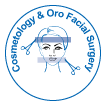Our Group organises 3000+ Global Conferenceseries Events every year across USA, Europe & Asia with support from 1000 more scientific Societies and Publishes 700+ Open Access Journals which contains over 50000 eminent personalities, reputed scientists as editorial board members.
Open Access Journals gaining more Readers and Citations
700 Journals and 15,000,000 Readers Each Journal is getting 25,000+ Readers
Introduction: This is a retrospective study to assess the frequency and pattern of clinical ocular signs in the
patients with orbito-zygomatic bone fractures admitted to Maxillofacial Surgery Department at King Fahad Hospital,
Almadinah Almunawara from 2014 to 2017.
Patients and Methods: The study population was divided into 3 subgroups based on the extent of the bony
injury (confirmed by clinical, plain radiographic, and CT examination) as follows: Group-1: âÃâ¬ÃÅsimpleâÃâ¬Ã noncomminuted
orbitozygomatic complex fractures; Group-2: comminuted orbitozygomatic complex fractures; Group-3: âÃâ¬ÃÅpureâÃâ¬Ã orbital
blowout fractures. Patient demographics, fracture etiology, and ocular findings were recorded. Patients with midfacial
fractures and those with isolated zygomatic arch fractures were excluded. All Patients were examined by the
ophthalmology service preoperatively and reviewed postoperatively if indicated.
Results: There were about 156 patients (142 male, 14 female) who fit the criteria for study. The children group
(age from 1 to 14 years) found to be 29 while the adult group is 127. In Group-1 (n=105), ocular findings were seen
in 2 (13.3%) patients among 105 which consist of diplopia (n=1, 0.9%), and blindness in 1 case, (0.9%). In Group-2
(n=37), 15 ocular findings were identified among 37 patients as follow: exophthalmos (n=5, 13.5%), blindness (n=3,
8.1%), occulomotor nerve injury (n=5, 13.5%), rupture globe (n=1, 2.7%) and exfoliated globe (n=1, 2.7%). In
Group-3 (n=14) there were 6 ocular findings represent (42.8%) of the total of this group patients. Finding was
exclusive to diplopia (n=6).
Conclusion: Clinical ocular findings and injuries are a relatively common complication of orbitozygomatic
fractures, occurring in 23 (14.7%) patients in this study. These injuries occur more often and with high level of
significance in both comminuted orbitozygomatic complex fractures patients and orbital blowout fractures but less
often in simple orbitozygomatic complex fractures. As a result of that, ophthalmology consultation and ocular
assessment before operation are mandatory for Group-2 and 3 presenting with orbitozygomatic fracture
Indexed In
- RefSeek
- Hamdard University
- EBSCO A-Z

 Spanish
Spanish  Chinese
Chinese  Russian
Russian  German
German  French
French  Japanese
Japanese  Portuguese
Portuguese  Hindi
Hindi